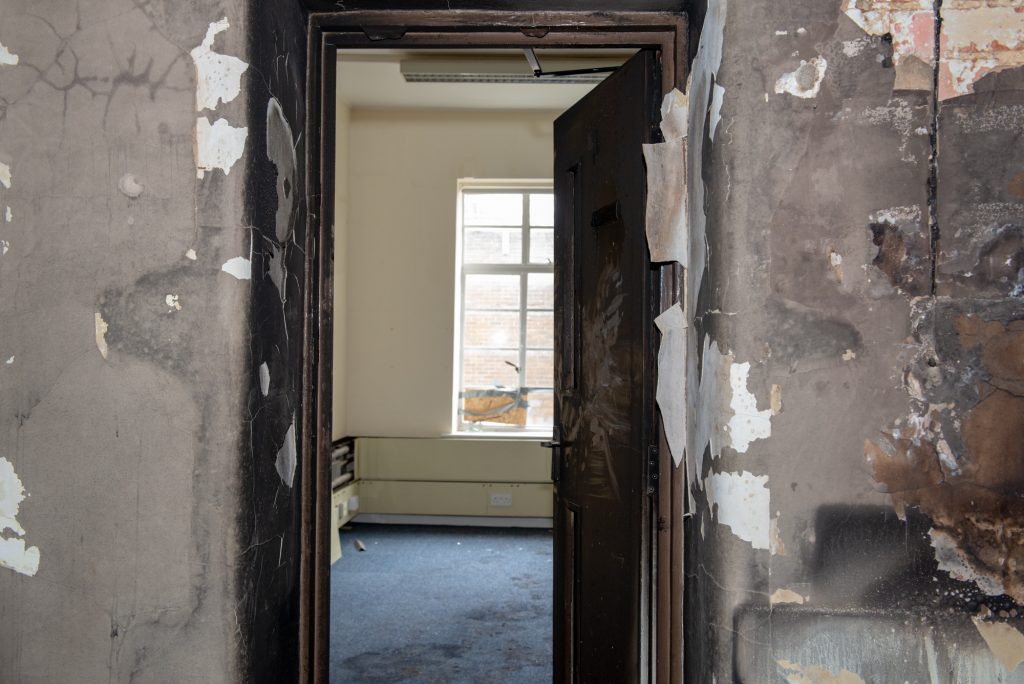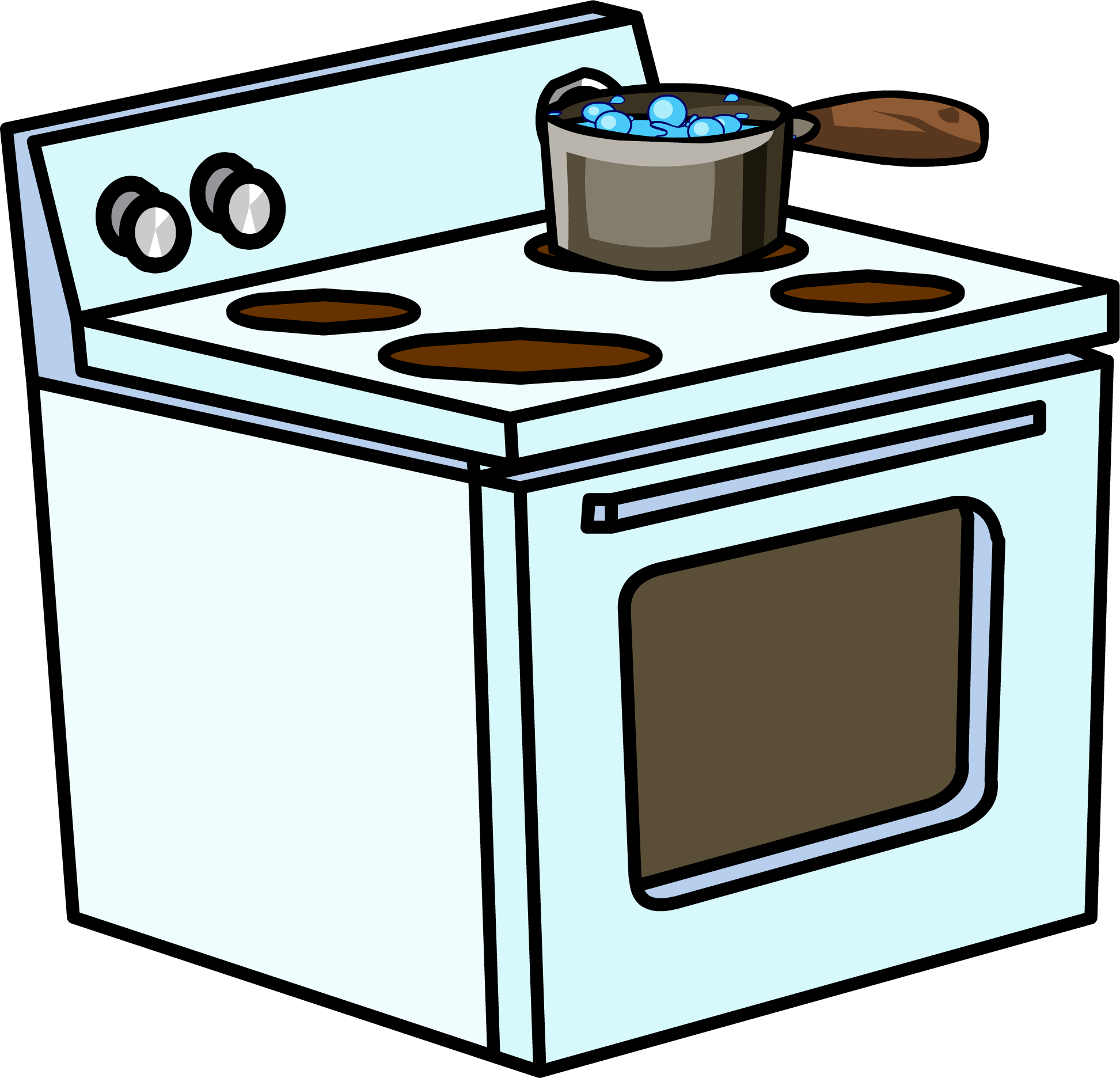A photo showing the internal damage to an office at Northampton Museum and Art Gallery is today being released to show the role fire doors can play in minimising destruction to a building.
Northamptonshire Fire and Rescue Service (NFRS), is sharing an image from inside the office space which was left damaged after a fire broke out on February 13, this year.
The image, which was taken with the permission of building owners Northampton Borough Council, clearly shows how the fire was stopped in its tracks by the presence of well fitted fire doors.
This incident involved a fire in a main, open plan office area, which was left black with smoke damage. Due to the presence of secure, closed fire doors, flames did not progress beyond this area and so damage was kept to a minimum.
The photo clearly shows a smoke blackened area in the main office and, beyond the fire doors, clean undamaged walls.
Community Protection Manager Scott Richards praised the installation of the fire doors and the obvious quality of their fitting and maintenance, as sometimes organisations can fail to properly consider the impact these features have in case of a fire.
He said: “We would encourage all businesses to think about their own premises and consider what a fire would do to their building. Think about whether you would be able to continue to operate if your offices or warehouses suffered a fire.
“Fire doors are so important because they protect areas such as staircases and other escape routes in buildings, such as care homes and hotels, making escape more possible. They also help to enclose high risk zones such as kitchens and boiler rooms. Their other purpose is to subdivide buildings to limit the spread of smoke and fire.”
“When looking at the area in which the museum fire was, in comparison to the inside of the neighbouring, smaller offices a few metres from the main area of fire, it can be clearly seen that these closed fire doors did their job properly.”
Fire doors which are inappropriately used or incorrectly fitted are common fire safety issues. Below we have compiled a list of common mistakes in fire door usage.
Common fire door issues:
- Doors wedged open, allowing potential smoke and fire to spread
- Door jamming on the frame
- Self-closing device failing to shut the door and needing adjustment
- Strips and seals around door becoming damaged or ineffective
- Damage to the door front or edge, affecting the door’s fitting
- Glazing becoming loose due to damage
- Glazing being replaced by glass which is not fire resistant
- Poorly fitted doors, perhaps fitted by someone unqualified
- Use of inappropriate materials, such as non-fire resistant wood
- Doors fitted in walls or next to glazing that isn’t fire resistant
- For more information about fire door safety, visit: https://www.firedoorsafetyweek.co.uk/








 Fire Risk Assessment (worked example for House in Multiple Occupation (HMO)) (PDF 389KB)
Fire Risk Assessment (worked example for House in Multiple Occupation (HMO)) (PDF 389KB)
